Frame: 2011 Specialized SX, with OEM Fox RP23, and Pushed Fox RP23 with special tune. “Short” size of two options.
Intended Use: Four cross, Slalom, Slopestyle, Dirtjumping, General jumpy mayhem
Geometry Chart: Specialized SX Frame
Rider: 5’8”, 160 lbs. of stocky, pissed-off chihuahua, with about a decade of DH, 15 years of XC, 7 years of dirtjumping, way too much digging, and a love for speed over any and all terrain.
Test Location: Woodward West Mega Trails, Northstar dirtjump park
Duration of test: Several months of intermittent riding since Autumn, 2010.
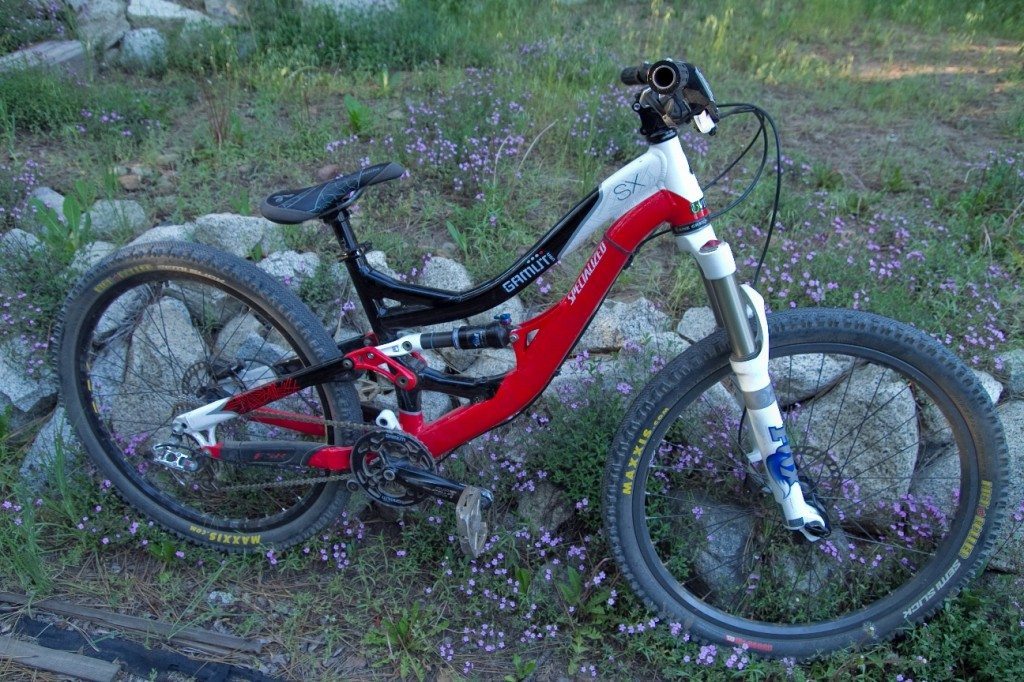
The Specialized SX is the little brother of the very popular Specialized SX Trail, and has been around for years in several different incarnations. It is and always has been a 4 inch(-ish) travel frame that sported a design similar to the corresponding version of the SX trail, but with more of a focus on transitions, jumping and pumping.
This particular iteration of the SX has existed since 2009, and features a beefier build, a lower toptube, and a very different approach to suspension than it’s predecessors. It’s one of those models that sells out every year – even though you may not see too many of them around – perhaps because of a limited production run on the part of Specialized. In any case, you aren’t going to see it everywhere, but those who want to know, know about this one. It’s a dirtjumper and slopestyle toy. It could possibly be a 4x race bike if 4x ever stops using gate starts, where hardtails rule – but that isn’t likely to happen any time soon….
I bought and built this bike with my own money. I had looked around at the few slopestyle offerings out there, and settled on this one primarily because I knew it would be stiff, well-built, and had one of the lower BB measurements available. I’ve owned a lot of Specialized bikes, never despised any of them, and more often than not, I’ve been really pleased.
The parts I used on the bike are appropriate for its intended purpose: Mavic 721 rims with stout spokes on Hadley hubs, the same Holzfeller dh cranks I use on my dh bike, a Sram X-9 drivetrain, the Thomson post that Specialized ships with the frame, a Fox 36 tapered steerer FIT float RC2 lowered to 100mm, a burly 45mm stem, Shimano XT servo hydro brakes, Maxxis High Roller semi slick single ply tires, and some 29” Sunline dh bars. Basically it’s a build that allows me to throw it around — with or without me — and have it survive just fine.
Most of my own measurements came out close enough to what’s listed on the website that they’re not worth mentioning. The only notable difference is head angle. Listed as 68, with a tapered steerer and external 1.5 lower headset, mine comes out pretty solidly in the low 66 range. If it were anything but a dirtjumper, I’d be ecstatic, but as it stands, I’m looking to put a 1 ⅛” fork on this bike with a flush headset to lower the front end and steepen it up a bit.
My first few rides on the frame were at the Northstar dirtjump park last fall. The big line there falls somewhere between your average dirtjump trails and some of the more slopestyle-type jumps you might see. The line’s most notable trait is that it’s fast – kind of scary fast for the size of the jumps, actually – but it’s also a line I know very well and have ridden a ton on my hardtail over the past few years.
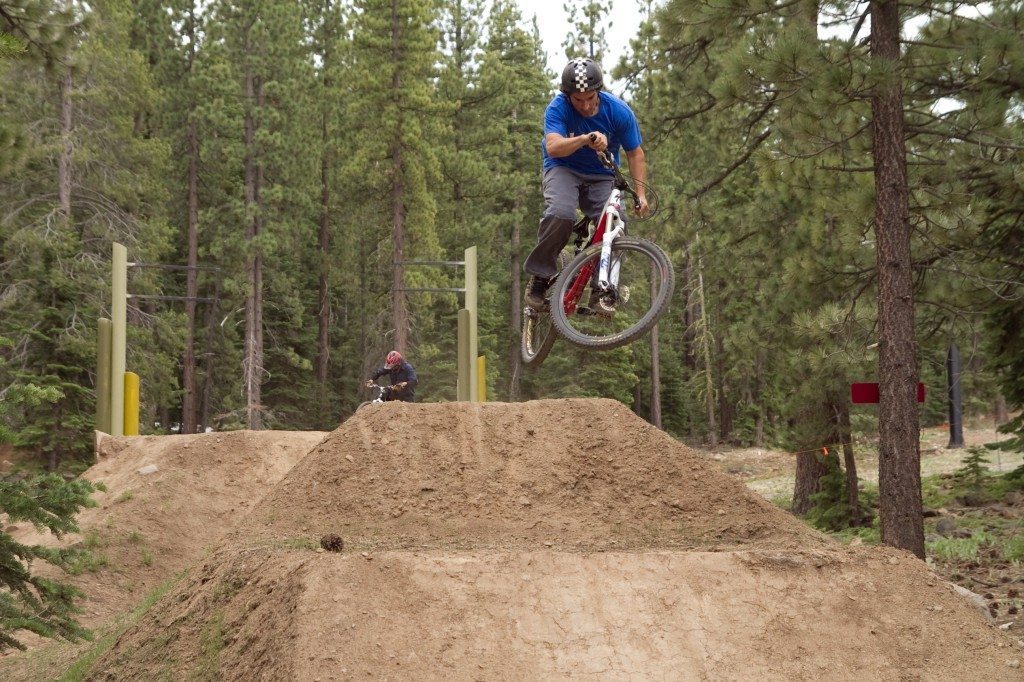
My first (and third and fourth) impressions were that the Specialized SX felt like a freaking mountain bike. Yes, it is a mountain bike insofar as it has 26” wheels and a shifter, but no, really…this thing belongs on trails with rocks. At 260psi on the rear shock, I was using every single bit of travel on every jump. “Plush” is not the feeling you want when hitting 6ft tall lips at 25mph, yet that’s exactly what this bike in its stock setting produces.
I changed the propedal setting and bumped up the pressure a bit, yet I still felt like I was sinking into the frame up faces far deeper than I wanted to, no matter how hard I preloaded before lips. This a problem. I bought this as a dirtjumper, but the frame itself seemed to have such a falling rate suspension design (I’ll say more about this below) that there was none of that poppy progressive feedback one typically wants on a bike meant for jumping. I’d ridden some of the previous model SX frames, and they were not like this. At all. Upping the air pressure just overstressed the rebound damping, so I felt pretty limited in how high I could reasonably go.
Specialized is notorious for getting model-specific shocks for their frames, and this is the case with the SX: a 7.5” x 1.5” shock is what you get. It’s basically a 6.5” x 1.5” shock with an extended shaft to take up the long space between the downtube and shock link. My suspicion is that Specialized used a few of their tubing sets from the small and medium 2010 SX Trail frames, rather than completely redesign a frame that they’ll probably only sell a few hundred of. This also may explain the largely falling rate suspension, in that the SX essentially rides like an SX Trail in just the top part of its travel. (This is entirely speculation though.)
I was curious – well, suspicious – so I checked to see whether a 7.875” x 2.0” shock fits in the frame. It doesn’t. You’re not going to make an SX Trail out of an SX frame.
To address what I was experiencing, I used a very primitive method. What I was feeling was what many people call a “falling rate suspension,” meaning the leverage ratio increases through the travel. In other words, it’s like… (please insert here your favorite inebriated greek social club cliche)…in that, once things get started, it gives up the rest FAR too easily. I never bottomed the thing, but I was constantly sitting way too far into the travel and got no ‘pop’ when unloading off lips, because the bike was continuing to compress.
Air springs are pretty simple; the larger the volume for a given pressure, the more ‘linear’ they’ll feel. The smaller the volume, the greater increase in resistance you’ll experience as you move toward full travel. So I decreased the volume of the stock shock, while concurrently ordering another shock from specialized to send straight to PUSH. Specialized uses the smaller volume air cannister on these frames so I had to improvise a way to reduce the main chamber volume. I filled part of the cavity with Slick Honey grease in the top of the shock so that it would be out of the way and not interfere with the shock function. (Yes, really, and yes, it worked.)
I took the bike out with the slicked shock, and at the same pressure range, I could immediately feel a difference. It wasn’t quite all that I was hoping for, but it was definitely a step in the right direction.
After an afternoon of riding, I took the shock off, checked inside, and the ‘filler’ hadn’t migrated at all, so I was satisfied with this ghetto fix until I could get a better solution. Keep in mind, I’d in no way tell anyone to do this without them first understanding why. And please don’t just go and fill up your shocks with grease. First, you need to find a pretentious suspension geek with no sense of adventure, tell him your intentions, and THEN go fill up your shock with grease and giggle at his pontifications. Much more fun that way.
I had also opened a dialogue with Darren at PUSH, and he was trying hard to convince me that the spring curve was not what I wanted to change, but rather the compression damping with regard to shaft speed. We had some minor differences regarding approach, but I’d loved the two shocks I’d gotten PUSH to work on previously for my DH bikes, so I figured I’d trust his judgment. (I still believe this frame needs a more progressive shock if the suspension kinematics are to remain unchanged with the frame itself, but also agree that Darren has a valid approach….)
The shock from PUSH was an improvement over the stock RP23 that came with the frame, no question. The damping range within the RP23 propedal settings was increased dramatically, making it a more highly refined suspension device. With the “3” setting in particular, there’s more resistance on lips, and pumping feels slightly more efficient; unfortunately, it still blows through its travel far too easily for my liking.
This tune in particular also added a bottom out bumper which I hoped would achieve some of the same volume reduction I was after with my high-tech grease trick. It does, but honestly, not enough. A buddy who’d ridden the previous SX frames for years even said the same thing after hopping on my bike with the PUSHed shock…”far too linear.”
One thing I did ask for was an increased rebound damping capacity for the higher pressures, and they did a decent job regarding that. I was able to comfortably get up around 280psi before the rebound damper became stressed. I never brought my issues up with Darren or anyone at PUSH afterward, because I kind of got the impression that he didn’t believe I knew what I wanted: a more progressive shock, not just a more damp shock. I may still contact PUSH and see what we can work out.
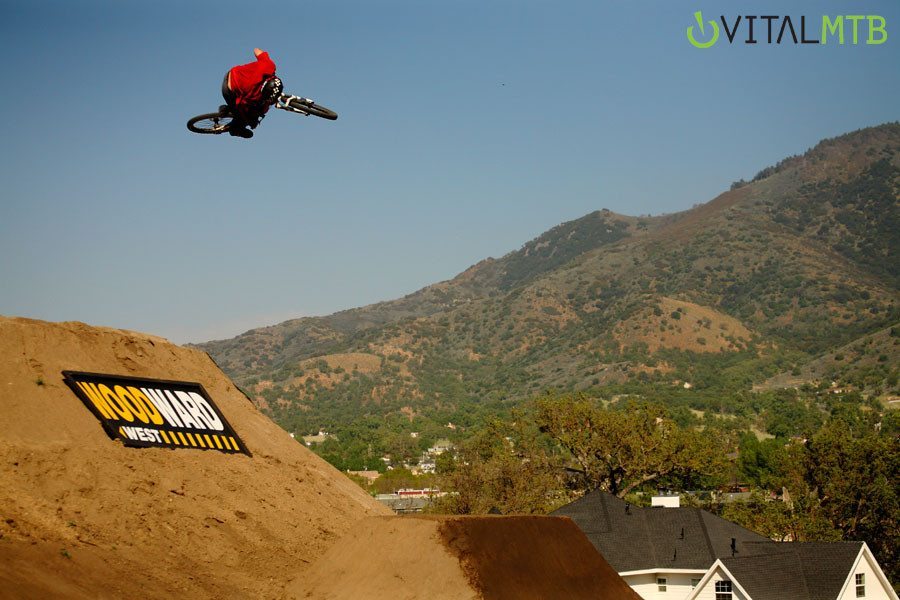
I’ve warmed to the Specialized SX a good bit since then, and would describe it as more of a mountain biker’s jump bike: someone who spends more time on a dh bike than a hardtail will feel really comfortable on this frame. It’s stiff, it’s low, it’s incredibly sturdy, and it feels like a bike with more travel than it actually has.
When I got to ride some much bigger jumps at Woodward West this Spring, the bike felt more at home than at the Northstar Jumps. Bigger and faster features began to highlight its strengths. To be honest, it reminds me a lot of the 2008 Specialized Demo 7 I used to own, just in a more compact package. It feels fine doing all kinds of scrub whips, tables, no hand and no foot tricks. The SX is long, but on a big enough jump, I was able to get it around on a few 360s-to-sand-landing face plants. I don’t have 360s dialed by any means, so if I can get the bike around, it’s certainly not going to be a problem for somebody who does.
I do, however, have a hard time envisioning something like tailwhips being as easy on this frame as it would be on some others, but I’ve never brought a tailwhip back to my feet on any bike anyway, so take that for what it’s worth.
In the last few months I’ve gotten to pedal around on a Blackmarket Killswitch, a newer Transition Double, last year’s Kona Bass, and the elusive Trek Slopestyle bike that doesn’t exist unless you’re one of the privileged four in the world. To be honest, every single one of these felt more like full suspension dirtjumpers than my own frame.
If you’re a hardtail guy and want a suspension bike that feels closer to that steeper, tighter geometry, you may want to check out those other options. But if you’re usually on a dh or longer-travel trail bike and want something to jump around on, I think you’ll feel pretty at home on the SX. “Twitchy” it is most certainly not. This frame absolutely rails when on the ground, and to be honest, I’ve had a lot of fun on it. And yet, I’ve still got a few tweaks I want to try to see if I can get it a little more dialed for what I’ll be doing with it. Just be aware that the rear end tends more toward “fast and racy” than “poppy.” I personally would not ride this frame with the stock shock for any long-term period on dirtjumps. The fact that Specialized has put this particular frame out for three years now makes me think they’re looking to occupy a niche that many of the other slopestyle bikes don’t fill; namely, a more race-oriented bike design.
Specialized put the same E-type derailleur mount on the swingarm of this frame that you’ll find on some of their trail bikes. They’re aware of the thoughts that this type of shorter travel, stiffer-than any-xc-bike-genre may incite in some of your minds. My mind is there too. I’ll be putting some dh tires on this thing, letting some air out of the shocks, and begin cruising some local trails in the woods to begin investigating what I think will be a completely valid application of this frame. Stay tuned for part two….

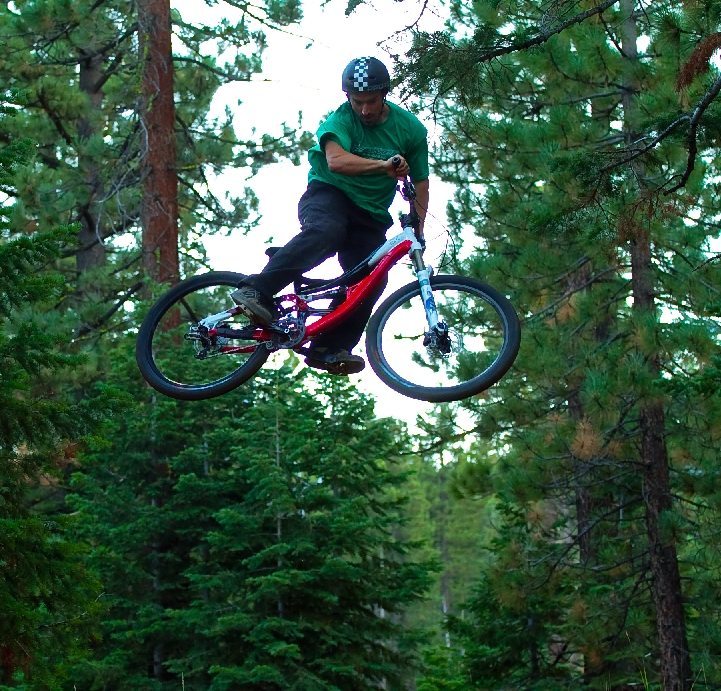
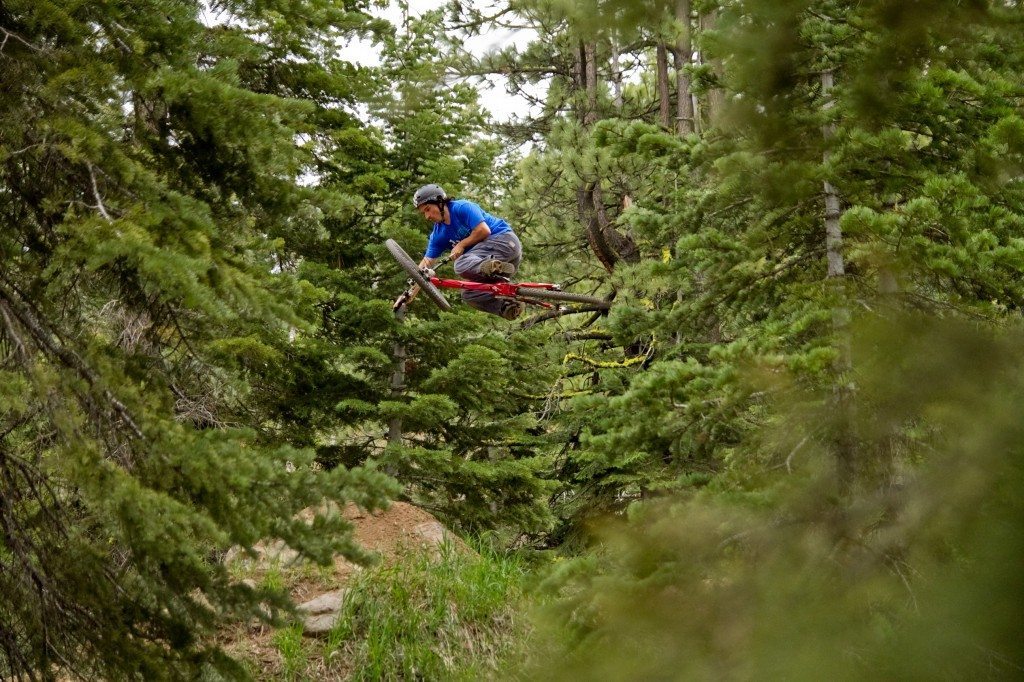
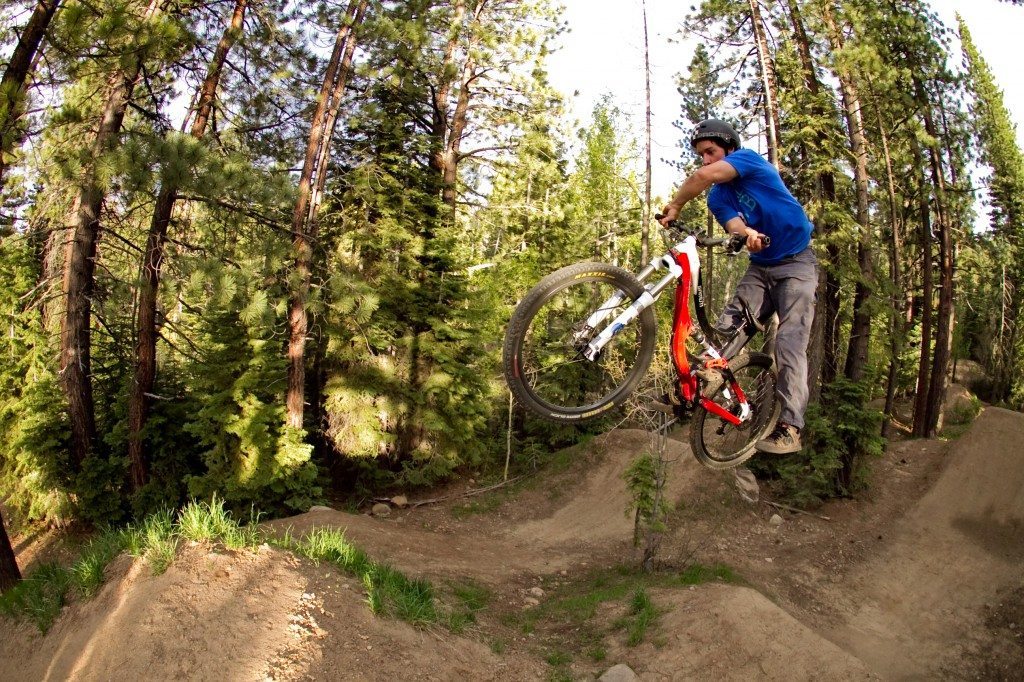
Hey There, Just wanted to know what kind of headset was used in the build of your SX, your article was great by the way. Thanks
Hey I was thinking of buying an sx and because of your article I’m sold. I normally ride dh and have been jumping on my super beefy and heavy freeride bike. So I wasn’t sure on a hardtail. But this bike sounds perfect for me.